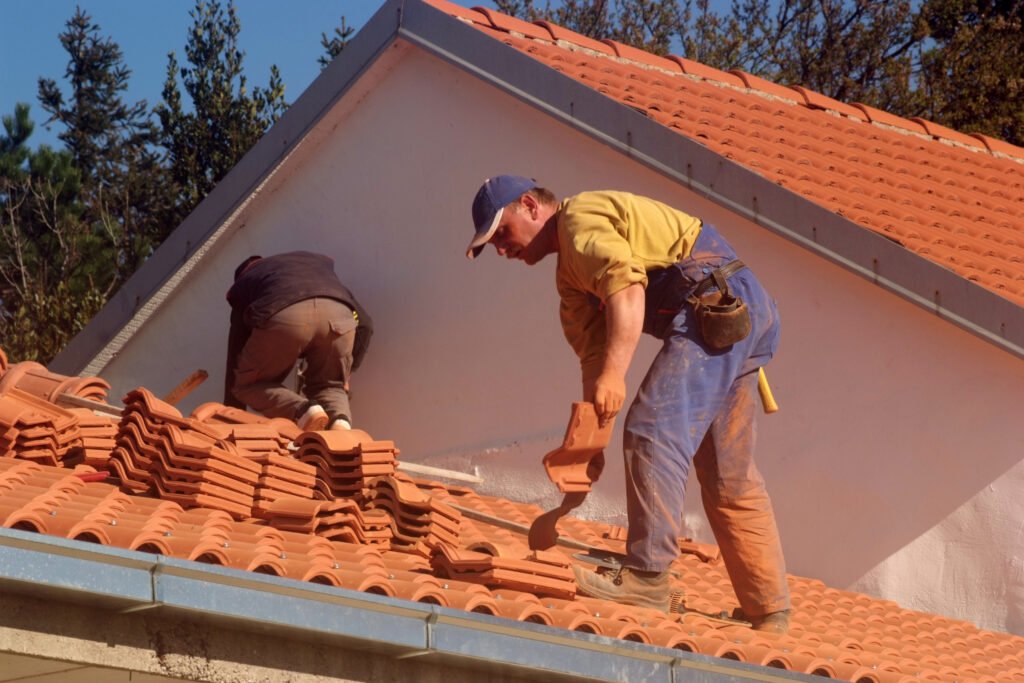When it comes to roofing, one of the most fundamental decisions homeowners face is whether to opt for a flat roof or a sloped roof. Each roofing type has its own set of advantages and disadvantages, and the choice between them depends on various factors such as architectural style, climate, budget, and intended use. In this comprehensive guide, we’ll explore the pros and cons of flat roofs and sloped roofs, as well as their best use cases, to help you make an informed decision for your home.
Flat Roofs:
Flat roofs are characterized by their low slope or no slope at all, typically with a pitch of less than 10 degrees. They are commonly found on commercial buildings, modern homes, and in regions with arid climates. Here are some of the pros and cons of flat roofs:
Pros:
- Affordability: Flat roofs are often more cost-effective to install compared to sloped roofs, as they require fewer materials and less labor.
- Accessibility: The flat surface of a flat roof makes it easier to access for maintenance, repairs, and the installation of rooftop equipment such as HVAC units and solar panels.
- Space Utilization: Flat roofs provide additional outdoor living space, which can be used for recreational purposes, gardening, or as a rooftop terrace.
Cons:
- Drainage Issues: Flat roofs are prone to water pooling, which can lead to leaks, water damage, and premature deterioration of roofing materials.
- Maintenance Requirements: Flat roofs require regular maintenance to ensure proper drainage and prevent water damage. This may include cleaning debris from drains and gutters, inspecting for signs of leaks, and resealing vulnerable areas.
- Limited Aesthetic Options: Flat roofs may not suit all architectural styles and can be considered less visually appealing than sloped roofs.
Sloped Roofs:
Sloped roofs, also known as pitched roofs, are characterized by their steep incline, typically with a pitch greater than 10 degrees. They are the most common type of roof found on residential homes and come in various styles such as gable, hip, and mansard. Here are some of the pros and cons of sloped roofs:
Pros:
- Effective Drainage: The steep slope of sloped roofs allows for efficient water runoff, reducing the risk of water pooling and leaks.
- Durability: Sloped roofs are less prone to water damage and tend to have longer lifespans compared to flat roofs.
- Aesthetic Appeal: Sloped roofs offer a timeless and classic look that complements a wide range of architectural styles, adding curb appeal and value to your home.
Cons:
- Higher Cost: Sloped roofs generally require more materials and labor to install compared to flat roofs, making them a more expensive option upfront.
- Limited Usable Space: The steep pitch of sloped roofs makes them less suitable for rooftop activities or the installation of rooftop equipment.
- Complex Maintenance: Cleaning and maintaining a sloped roof can be more challenging and require specialized equipment, especially for roofs with steep pitches.
Best Use Cases:
Flat Roofs:
- Commercial Buildings: Flat roofs are commonly used in commercial construction due to their affordability and suitability for rooftop equipment.
- Modern Homes: Flat roofs are popular in contemporary architectural styles, such as minimalist and modernist designs.
- Arid Climates: Flat roofs are well-suited to regions with low rainfall and little risk of water pooling.
Sloped Roofs:
- Residential Homes: Sloped roofs are the preferred choice for most residential properties, offering both aesthetic appeal and functional benefits.
- Traditional Architectural Styles: Sloped roofs are commonly found on homes with traditional architectural styles, such as colonial, Victorian, and craftsman.
- Areas with Heavy Rainfall or Snow: Sloped roofs are ideal for regions with high precipitation levels, as they provide effective water runoff and prevent water damage.
Conclusion:
Both flat roofs and sloped roofs have their own unique advantages and disadvantages, and the best choice for your home depends on various factors such as architectural style, climate, budget, and intended use. By weighing the pros and cons of each roofing type and considering your specific needs and preferences, you can make an informed decision that ensures the long-term durability and functionality of your roof. Whether you opt for a flat roof or a sloped roof, investing in quality materials and professional installation is key to a successful roofing project that provides lasting protection for your home.


